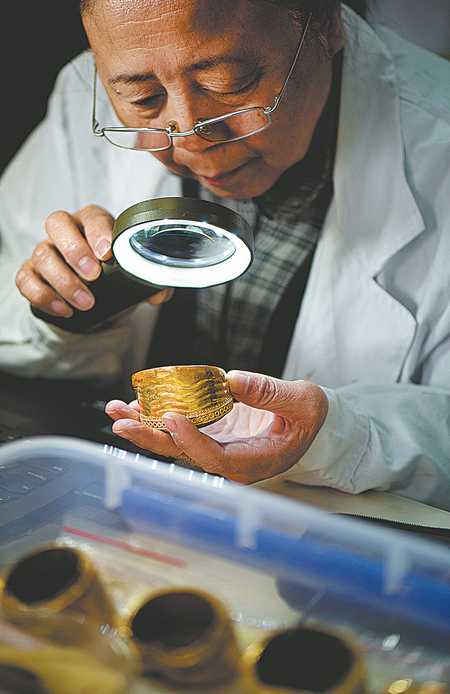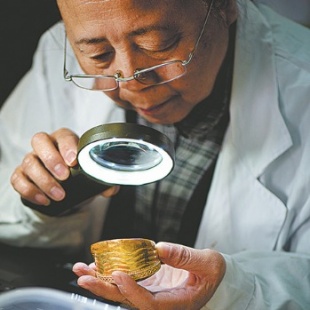A historic publication
Epic work celebrates a century of achievement in Chinese archaeology, Wang Kaihao reports.


To mark the centennial of the birth of modern Chinese archaeology, a multi-volume work has been published, honoring generations of researchers who have devoted themselves to unearthing and decoding the country's history.
One Hundred Years' History of Chinese Archaeology (1921-2021), which comprises four volumes and took 276 scholars three years to compile, was finally released by China Social Sciences Press in Beijing on Wednesday.
According to Wang Wei, president of the Archaeological Society of China and chief editor of the book, it is, to date, the largest and most comprehensive encyclopedia on Chinese archaeology of the past century. The unprecedented project contains about 9.17 million characters of text.
"Chinese archaeology has entered a golden age," Wang says. "At this crucial moment, it's necessary to review the progress of the last 100 years if we want to explore our own path of studies with Chinese characteristics in the future."
In 1921, the excavation of Yangshao village site in present-day Sanmenxia, Henan province, marked the start of systematic studies on the Neolithic period of China. The extraordinary discovery of a more than 5,000-year-old culture was also widely credited by scholars as the birth of Chinese archaeology.
In October, in a congratulatory letter to a conference in Sanmenxia, celebrating the monumental anniversary, President Xi Jinping also called for utilizing Chinese features, styles, ethos in related work, while hailing the great achievements of archaeologists in the past century.
The newly published work is divided into about 50 thematic sections, mainly in chronological order. They range from major prehistoric sites across the country to more "recent" discoveries and treasures from the Ming (1368-1644) and Qing (1644-1911) dynasties.
Different types of sites, like graveyards, city ruins, grotto temples, alongside relics made from jade and ceramic, are elaborated upon. Key findings from along the ancient Silk Road, the Great Wall, oracle bone inscriptions (the earliest known Chinese written characters) and other important Chinese cultural icons are also separately reviewed.
"But the book is not just a collection of brief introductions on the outstanding discoveries of the past 100 years," Wang explains. "More importantly, it's a review of crucial academic viewpoints and how the understanding of scholars has developed."





































